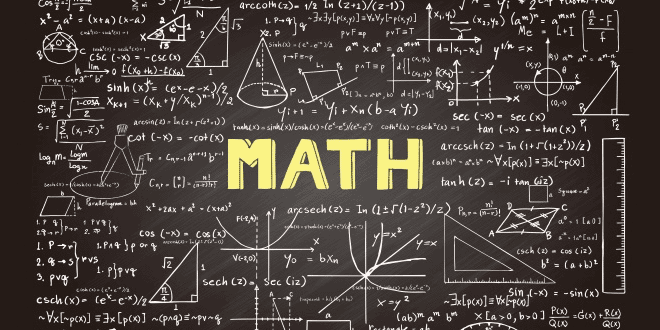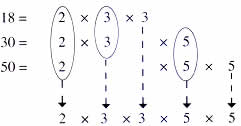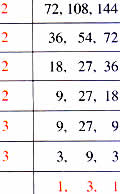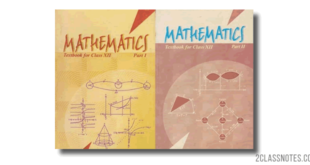LOWEST COMMON MULTIPLE
The multiples of 2 are 2, 4, 6, 8, 10, 12, 14, 16, 18, 20, 22, 24, 26, 28, 30, 32, …
The multiples of 5 the 5, 10, 15, 20, 25, 30, 35, …
The common multiples is called of 2, and 5 are 10, 20, 30
The least of these multiples is called the lowest common multiple (LCM).
The lowest common multiple (LCM) of 2 and 5 is 10.
(a) Find the LCM of 3 and 6.
3, 6, 9, 12, …
6, 12, 18, …
LCM of 2 and 6 = 6.
Of two numbers if one is a multiple of the other, the greater number is the number is the LCM.
(b) Find the LCM of 3 and 7.
3, 6, 9, 12, 18, 21, …
7, 14, 21, …
3 and 7 are co-primes.
The LCM of co-primes is the product of the numbers.
3×7 = 21
LCM of 3 and 7 = 21.
Finding LCM
There are two methods of finding the LCM of numbers.
1. Prime Factorization Method
Find the LCM of 18, 30 and 50 using the prime factorization method.
Step 1. List out the prime factorization of each number.
Prime factors of 18 = 2×3×3
Prime factors of 30 = 2×3×5
Prime factors of 50 = 2×5×5
Step 2. Rewrite with common factors one below the other.
Step 3. Multiply: 23×3×5×5 = 450
Thus, LCM of 18, 30 and 50 = 450
2. Common Division Method
Find the LCM of 72, 108 and 144 using the common division method.
LCM = 2×2×2×2×3×3×3
LCM = 432
Step 1. Divide by the smallest prime number that can divide at least one of the numbers. Bring the ones that cannot be divided down as it is.
Step 2. Keep dividing by the Smallest possible prime number till the last row has only prime numbers or numbers that have only 1 has a common factors (co-primes).
Step 3. Multiply all the common factors and all the numbers in the last row to get the LCM.
 Class Notes NCERT Solutions for CBSE Students
Class Notes NCERT Solutions for CBSE Students









